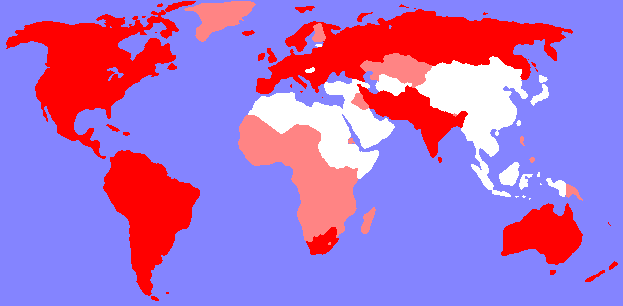Introduction
The Indo-European languages comprise a family of several hundred related languages and dialects, including most of the major languages of Europe, as well as many spoken in the Indian subcontinent (South Asia), the Iranian plateau (Southwest Asia), and Central Asia. Indo-European (Indo refers to India) has the largest numbers of speakers of the recognised families of languages in the world today, with its languages spoken by approximately three billion native speakers.
Geographical distribution

Red: countries with a majority of speakers of IE languages Light-red: countries with an IE minority language with official status
Language Family Tree
Indo-European- Anatolian (10 languages)
- Classical Indo-European
- Albanian
- Albanian-Tosk
- [aae] Arbëreshë Albanian
- [aat] Arvanitika Albanian
- [als] Northern Tosk Albanian
- [aln] Gheg Albanian
- Albanian-Tosk
- Armenic (3 languages)
- Balto-Slavic
- Eastern Baltic (2 languages)
- Slavic (20 languages)
- [prg] Old Prussian
- Celtic (14 languages)
- Germanic (106 languages)
- Graeco-Phrygian
- Indo-Iranian (322 languages)
- Italic (85 languages)
- Tokharian
- [xto] Tokharian A
- [txb] Tokharian B
- [xve] Venetic
- Albanian
- Unclassified Indo-European